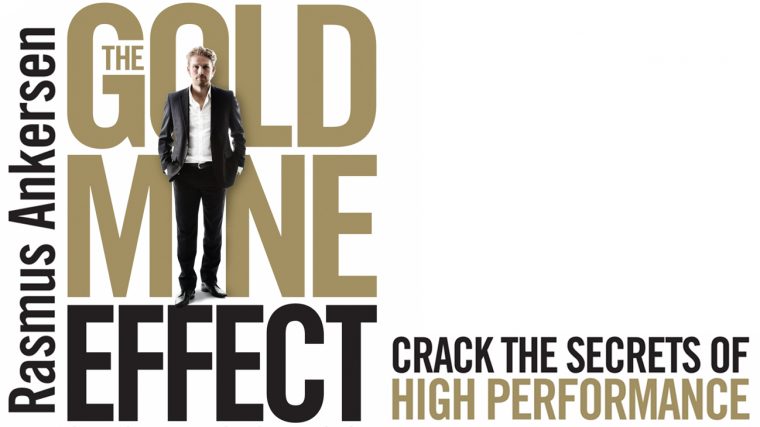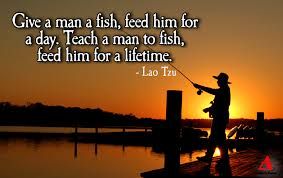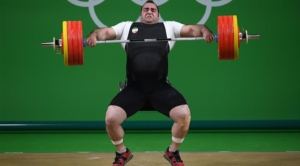First things first a very belated Happy New Year to Everyone! I hope you are all set for a fantastic 2015!
New Year’s Resolutions
I am going to resist the temptation to talk about goal setting and the statistics that show that 80% of people fail to stick to the resolutions they set for themselves (and by themselves) beyond the 31st January (Research quoted in the on-line blog mindfulyourownbusiness.com). The link is HERE if you do want to read the full article.
It’s tough at the Top
Today I would like to talk about Sport Specialisation. While January might mark a traditional time in the year to set new goals which may or may not be realistic I am surrounded by families that are putting a lot on the line to realise some pretty big goals of their own- becoming a professional athlete.
In the main sport that I work in of Tennis, it’s really tough to break through the lower levels of the professional tour as there is simply a limited pot of prize money for the top men and women to compete for. The Challenger and ITF circuits (which are the second and third tiers of the game) pay out much less than the ATP tour. It’s not until you are well inside the Top 100 and can consistently get into the Main Draw of the Grand Slam ATP Tour events that you can really start to earn a living. But at the same time once you do, it’s a really good living!
So coaches and parents are always looking to get ahead of the competition and give their players/children the best chance of making it. Now there are two schools of thought here. One is to specialise early in the sport you aspire to ‘make it’ as a pro in; the other is to diversify and play a range of sports until you are in your teens.
To summarise the current literature I am including a great review my colleague at British Tennis sent me on the topic.
Early sports specialisation defies logic! by Arran Peck
A recent article in The Huffington Post, an American news aggregator, highlighted the growing trend of young athletes specialising in a single sport at increasingly younger ages. The author posited that if the goal of the parent or coach is to develop the stand-out adolescent player, then early specialisation is intuitive & can be successful. If however the goal is to maximise the child’s athletic talents, then both academic & anecdotal evidence suggests that multi-sports participation & late specialisation increases the likelihood of success.
A recent study in the Journal of Sports Sciences found that young athletes who competed in 3 sports at ages 11-15 were significantly more likely to compete at an elite National level in their preferred sport than their single sport peers. In a second paper from the same journal, young males who competed in multiple sports were found to have better gross motor coordination, greater muscular strength, explosive speed & were physically fitter than those specialising early. Dr Martin Toms, Senior Lecturer in Sports Coaching & Performance Sociology from the University of Birmingham quoted recently “if your child was only offered one subject at school, you would worry about their academic development & the missed opportunity to learn new skills – so why is early specialisation in sport perceived as appropriate or acceptable?’
The long term athletic development guidelines produced & disseminated by the LTA encourages multi-sport participation until late adolescence to minimise the risk of social isolation, over-dependence, burnout & injury – while as a practitioner you may not be able to limit the total volume of tennis time your young players are exposed to, you should include (within your programme) or facilitate (external to your programme) a mixture of fundamental movement & general athletic skills and resist the temptation (and pressure) to reinforce specific sports skills at the earliest ages.
McCaw Method
For those of you who follow my Facebook page (please remember to like it!!) you may also want to check out McCaw Method. Alistair McCaw is a big fan of young athletes playing a range of sports until their early teens and supports his view with research into Olympic Sport athletes.
But what about the 10’000 hours?
How does this fit with 10,000 hours? (as that’s 3hrs/day from 8 to 18 years old to achieve pro status). You can’t hope to get 3 hours done a day in a sport if you’re still playing 3 sports???
Or you could look at it as 10 years to break inside Top 100 from 14 to 24 years- as most players will not break the Top 100 until this age now.
Are all the sports additive to the hours behind the expertise needed? Can the ‘hours’ simply include any purposeful activity that is related to sport that will contribute towards expertise. So for example, if I spent the whole day at an elite Tennis Academy for 9 hours my day could include:
- 3 hours in the class room
- 2 hours Tennis
- 1 hour Basketball
- 2 hours Strength & Conditioning
- 1 hour Mental Skills
Would only the two hours Tennis count towards my 10,000 Hours? My view is that any deliberate and purposeful activity that is related to the dream goal of becoming a professional sportsman or woman is counted. So all of the above in my book would count. The trick is to know how much Tennis each individual needs to be able to achieve a basic level of competence so they can compete in the sport and get a bit of success. But you have to get the balance because although we all enjoy competition, I have previously talked about the presure that can quickly be created when you over emphasise the importance of winning!
At Gosling Tennis Academy, for example, APA are involved in talks with the Coaching and Sports Medicine staff to discuss (and refine) the optimum amount of Tennis that each full-time Academy player will play at any given time. This will usually range from zero to four hours of Tennis per day.
Gary Lyons commented on this: The importance of desire to want it
“The desire to want to put those 10,000+ hours in is the fundamental “talent” in the first place. Again it’s what separates out those destined for amateur vs. professional status. You can’t make someone do 10,000+ hours, they have to be born (and yes nurtured by good coaches) with a burning pit of desire in their stomachs to succeed, to strive where others fall by the wayside. And then hope they have the right genetics and natural ability to complement their inherent drive. The stark reality is that 99.9% of junior tennis athletes will fall to the wayside given there are only around 1,000 pro tennis players globally coming out of 100,000s kids in advanced tennis programmes. Pro tennis needs rapid re-evaluation at Futures and Challengers to widen the base so more have the opportunity of becoming pro, and then being able to break even once they get there given only the top 200 are doing so presently.”
What’s my position on this?
Well firstly, I do buy into the concept of children having some natural ‘talent’ towards a given task. Want proof? Check out these random clips of children doing what they do best.
Dancing
Martial Arts
Weight lifting
Note: there is also a lot of aspects where children model the behaviours of adults that I think can be potentially dangerous.
For example, I don’t agree with Deadlift meets done in this way. I think some times the sports performance arena that the adults ‘perform in’ needs to be modified so the children can ‘play’ in it. I would be emphasising (and rewarding) technique with young children over load lifted.
However, my point is that I think there are children who are just born with a DNA make up that makes them seem to:
a) have the potential to do something better than a lot of kids from the very beginning
b) learn something new at a faster rate
But I also believe in the importance of being in an environment that fully supports the enrichment of that talent. Parents are the biggest influencers as well as coaches. I dare say all those young children in the clips above have been copying parents and coaches from a young age. A good book to read is the Gold Mine Effect. It talks about how talent hot beds thrive in completely differently culturally influenced environments. You have the Jamaican sprinter, Ethiopian endurance runners, Russian tennis players, Korean Golfers etc and each culture has a slightly different environment which inspires success after success.

The most important thing is to enjoy what you do
In a recent interview Roger Federer, winner of 17 Grand Slam Titles in Tennis (in case you have been living on another planet), talks about the role of parents. He says how important is it to get the balance between being supportive and also making them feel the pressure that it is important they always give their best. See the full article HERE.
I (Daz Drake) personally believe in the following:
The 10’000 hour rule is an average, not the norm.
Some people who are more ‘talented’ will get to expert or elite level sooner and/or will need less hours to get there. For those people truly capable of being elite they will almost certainly be able to play multiple sports up until 14 and still make it in 1 sport when they are older.
The question I often ask myself is, is it because they played 2 or 3 different sports that they were then more able to succeed in 1 sport? Or is it simply that they are such supreme competitors (with exceptional athleticism and sport skills) that they could have got to the top regardless of what they did??
I personally feel that playing other sports is important for a variety of reasons. I do believe that playing other sports can accelerate certain athletic skills to a higher level that perhaps another sport cannot. For example, while Tennis is outstanding for developing multi-directional movement (agility), it won’t develop running technique anywhere near as good as going to your local track & field club. It won’t develop foot eye coordination, like football would do, or ability to work as a team like in rugby.
I do believe that the wider and deeper someone’s movement vocabulary is the more easy it will be for the child to acquire the more specific advanced skills of a sport later down the track.
Most importantly to me, I know that muscle pattern overload/over use is extremely likely if you keep hammering away at the same movement patterns inherent in one sport, over and over again. So even if I did believe that the key to getting great in one sport is to just play one sport (which I don’t), I would enforce that the athlete plays a few other sports, simply to work the muscles a little differently, and give the overworked ones a rest!
Talent Identification- Does it work?
Most businesses spend 2% of their time recruiting and 75% of their time managing their recruiting mistakes! In sport we also have situations where we recruit our ‘crop of current top talent’ and invest money in them, when there may be other kids out there with more potential that we never saw because their current performance was not as high.
I could risk upsetting a lot of people here so I will simply ask you to watch a great illustrated talk by the author of the GoldMine Effect on Talent ID. I agree with his views on the difference between Current Performance and Future Potential. How to you find potential in something that looks ordinary AT THE MOMENT is the secret!! That is why I really enjoy working with my partners at Gosling Tennis Academy because they always focus on helping their players realise their own potential and try their absolute best to make it possible for everyone to try and do that by removing as many barriers as they can.
1. What you see is not always what you get!!!
2. Never overrate certificates and underrate character
I hope you found this article useful and I’d love to hear your thoughts:
Remember:
- If you’re not subscribed yet, click here to get free email updates, so we can stay in touch.
- Share this post using the buttons on the top and bottom of the post. As one of this blog’s first readers, I’m not just hoping you’ll tell your friends about it. I’m counting on it.
- Leave a comment, telling me where you’re struggling and how I can help







